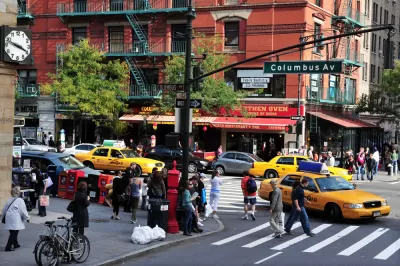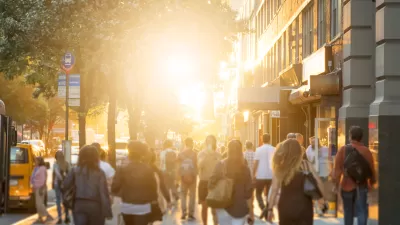The drop in crime in cities has extended American life expectancies, especially those of black men, and brought more wealthy people into urban areas.

American cities have become less violent in few decades, but Patrick Sharkey argues the causes and outcomes of this change are often misunderstood. In terms of the outcomes, falling crime rates have brought wealthy people into areas they had not lived in before and made some towns more tourist-friendly, but more importantly, the decline in violence has had a pronounced effect on American life expectancy, particularly for African Americans. "We found that the national decline in the homicide rate since [1991] has increased the life expectancy of black men by roughly nine months," Patrick Sharkey writes in the New York Times.
What caused this drop in crime is disputed. While Sharkey concedes that some of the drop in crime comes from problematic policing practices that put more Americans in jail, an under appreciated factor in making cities safer was the growth in anti-violence non-profits. "In a typical city with 100,000 people each additional nonprofit devoted to confronting violence led to a roughly 1 percent drop in the city's murder rate," Sharkey writes. He contends that these groups working directly with the community and law enforcement have the capacity to do yet more to curb violence and could be part of "a new model for combating urban violence."
FULL STORY: Two Lessons of the Urban Crime Decline

Alabama: Trump Terminates Settlements for Black Communities Harmed By Raw Sewage
Trump deemed the landmark civil rights agreement “illegal DEI and environmental justice policy.”

Study: Maui’s Plan to Convert Vacation Rentals to Long-Term Housing Could Cause Nearly $1 Billion Economic Loss
The plan would reduce visitor accommodation by 25% resulting in 1,900 jobs lost.

Why Should We Subsidize Public Transportation?
Many public transit agencies face financial stress due to rising costs, declining fare revenue, and declining subsidies. Transit advocates must provide a strong business case for increasing public transit funding.

Wind Energy on the Rise Despite Federal Policy Reversal
The Trump administration is revoking federal support for renewable energy, but demand for new projects continues unabated.

Passengers Flock to Caltrain After Electrification
The new electric trains are running faster and more reliably, leading to strong ridership growth on the Bay Area rail system.

Texas Churches Rally Behind ‘Yes in God’s Back Yard’ Legislation
Religious leaders want the state to reduce zoning regulations to streamline leasing church-owned land to housing developers.
Urban Design for Planners 1: Software Tools
This six-course series explores essential urban design concepts using open source software and equips planners with the tools they need to participate fully in the urban design process.
Planning for Universal Design
Learn the tools for implementing Universal Design in planning regulations.
Caltrans
Smith Gee Studio
Institute for Housing and Urban Development Studies (IHS)
City of Grandview
Harvard GSD Executive Education
Toledo-Lucas County Plan Commissions
Salt Lake City
NYU Wagner Graduate School of Public Service



























